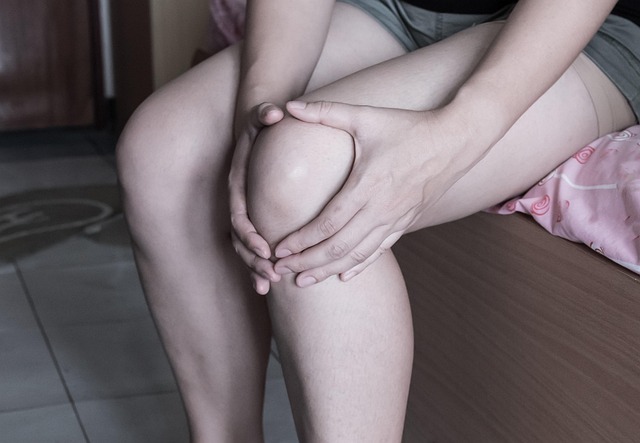Cold therapy, including ice packs and cryotherapy, is an effective way to reduce joint swelling and pain from sports injuries. By constricting blood vessels, it minimizes inflammation and provides immediate relief. This at-home treatment is convenient between training sessions, offering faster recovery for athletes. Applying ice packs for 15-20 minutes after exercise, within 48-72 hours, can significantly manage post-activity discomfort. Proper use includes wrapping ice in a towel, targeting surrounding areas with swelling, staying hydrated, and consulting medical advice if symptoms persist.
“Unwind the pain and inflammation associated with intense athletic activities through the power of cold therapy—a game-changer in managing joint swelling. This comprehensive guide delves into the science and effectiveness of using cold applications as a natural remedy. From understanding the mechanics of sports injuries to exploring practical techniques, we navigate the best practices for cold therapy. Discover tips and precautions to optimize results and learn how this simple yet powerful method can accelerate recovery.”
Understanding Cold Therapy for Sports Injuries
Cold therapy, also known as cryotherapy, is a popular and effective method used to reduce inflammation and joint swelling following intense physical activity. For athletes and sports enthusiasts, it offers a quick and natural way to alleviate pain and speed up recovery. By applying cold to injured areas, blood vessels constrict, which helps decrease the flow of fluids and reduces internal pressure within the joints. This process minimizes swelling and provides immediate relief from discomfort.
This therapy is particularly beneficial for sports injuries as it can be used as an at-home treatment, making it easily accessible for athletes between training sessions or competitions. Many cold therapy products, like ice packs or compression sleeves, are designed with a dynamic shape that allows them to conform to various body parts, ensuring targeted and effective cooling. Understanding how cold therapy works is the first step towards incorporating this powerful tool into your post-workout routine for faster and more efficient recovery from joint-related injuries.
The Science Behind Cold Application for Joint Swelling
The application of cold therapy, often in the form of ice packs or cold compresses, is a well-documented strategy for reducing joint swelling after intense physical activity. This method leverages the principle that cold temperatures constrict blood vessels, which in turn decreases blood flow to the affected area. By minimizing the influx of fluids and inflammatory cells, cold therapy helps alleviate pain and swelling, providing fast relief for athletes and active individuals suffering from sports injuries.
Scientists have confirmed that cold exposure triggers a series of physiological responses beneficial for joint health. It reduces metabolic activity in the injured area, suppresses inflammation, and promotes the healing process by stimulating the production of natural painkillers, such as endorphins. Cold therapy is particularly effective when applied within the first 48 hours after an injury, making it a go-to treatment for short-term pain management and swelling reduction in sports medicine.
Effective Techniques for Administering Cold Therapy
For optimal results in reducing joint swelling after intense activity, proper administration of cold therapy is key. One effective technique involves using ice packs or frozen gel bags, applying them directly to the affected area for 15-20 minutes at a time. This process helps constrict blood vessels, minimizing fluid buildup and inflammation. It’s crucial to wrap the ice pack in a thin towel to prevent direct contact with skin, which can cause frostbite.
Alternatively, immersing the swollen joint in cold water – such as taking a cool shower or using a cold tub – can also be beneficial. This method allows for continuous exposure to cold, promoting faster recovery from sports injuries. Additionally, some individuals find relief using cryotherapy units, which provide intense bursts of cold air, targeting specific areas of inflammation and swelling. These techniques, when used consistently, can significantly aid in managing post-activity joint discomfort.
Tips and Precautions for Optimal Results
When employing cold therapy for joint swelling post-intense activity, such as in the context of cold therapy for sports injuries, it’s crucial to observe certain tips and precautions for optimal results. Start by applying ice packs or cold compresses immediately after the intense activity; this can help reduce inflammation and numb the affected area, providing temporary relief. Ensure the cold application is brief—typically 15-20 minutes—and repeat this process every few hours for the first 48 to 72 hours following the injury.
Precautions are also essential. Always wrap ice packs or cold compresses in a thin towel to protect your skin from direct contact with cold, which can cause damage over time. Avoid applying cold therapy directly on joints or bones; instead, target the surrounding areas where swelling is more pronounced. Stay hydrated and maintain a balanced diet rich in nutrients that support healing, such as vitamins C and D, omega-3 fatty acids, and antioxidants. Consult a healthcare professional if symptoms persist beyond a few days or worsen, indicating potential underlying issues that require specialized attention.
Cold therapy has proven to be an effective strategy for reducing joint swelling after intense physical activity, offering a natural and accessible solution for athletes. By understanding the science behind its application and implementing suitable techniques, individuals can optimize recovery and prevent further injury. With proper precautions and consistent use, cold therapy for sports injuries can significantly enhance joint health and overall athletic performance.
